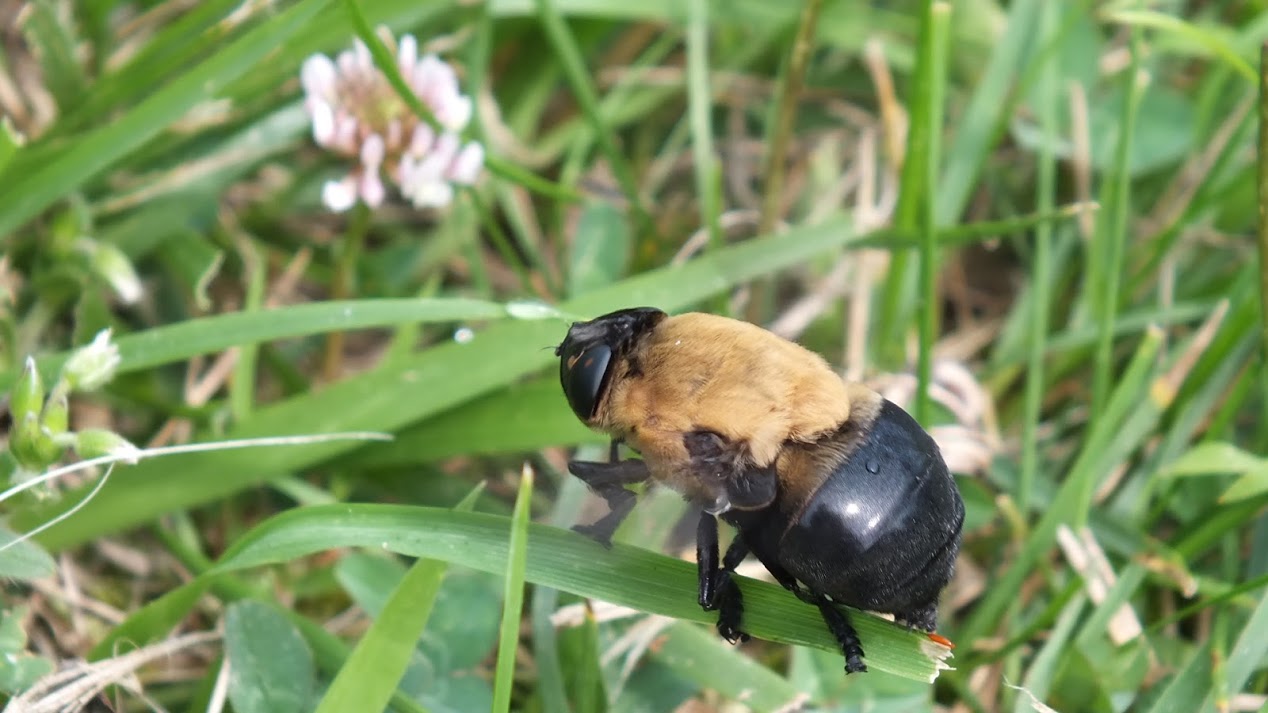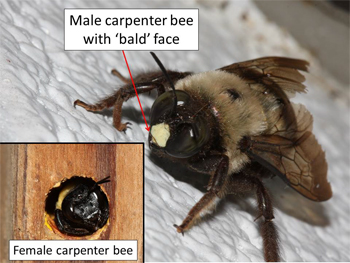Do Carpenter Bees Sting?
The Answer is Yes and No.
Starting in spring bees and wasps begin to appear and I can always tell that people are concerned because my posts on "What Bit Me?" gets a lot more traffic. I completely understand fear and phobia of bees, ranging from concerns of severe allergies to those that have watched horror movies. As a former bee keeper though, I truly love and respect bees. One of my most favorite types of bees are the carpenter bees (here in Maryland we have Xylocopa virginica). Yes, they can be destructive; yes, they are big; and yes they can be scary, but when you really study them they're quite interesting. So, on to the question, "Do carpenter bees sting?" And more importantly what should I do around them?
Is it a Carpenter Bee?
Let's start with a proper ID of a carpenter bee (Xylocopa virginica). Here's a checklist of what to look for:
- They're solitary bees, even if there are many in an area they nest alone and like to fly around by themselves and have tunnels of their own
- 1/2"-1" long
- Black and yellow markings
- Female has a dark face and male has a yellow face
- Hairless and often shiny rump, see picture below (bumblebees have a hairy rump)

- Makes nest tubes in trees or wood piles, the wooden parts of buildings, in eaves, wooden trim or in wooden sign supports
- Chew a perfect 1/2" round hole into wood

Don't be fooled, there are even some mimic flies that look like bumblebees. Compare the picture below of a harmless fly to the carpenter bee above.

What do Carpenter Bees Eat?
Carpenter bees, like other bees, eat nectar and pollen from flowers (mostly nectar). Notice this does not include the words wood, people, or small mammals...nectar and pollen. When they fly around you, you're really just in the way of either food gathering or making a nursery, continue reading below.
Why Do Carpenter Bees Chew Holes in Wood?
Female carpenter bees drill holes and make tunnels in wood as a protective nursery for their young. Their tunnels are long and branching inside the wood, and they go with the grain of the wood (it's easier to chew). When the tunnels are complete, the female lays down brood chambers of pollen and nectar (called bee bread), then lay an egg, and seal the chamber. The carpenter bee keeps adding until she lays 6-8 chambers. Check out this useful 2 minute video to learn more:
Do Carpenter Bees Sting?
The answer to this question is yes and no. Male carpenter bees (remember they have the cute yellow face patch) don't sting at all. The females (completely black coloration on face) can sting, but they really don't want to and it takes a lot to provoke them. A beekeeper friend of mine demonstrated this by going so far as to put a male bee on his tongue and open and close his mouth. It cheesed off the bee but everyone was fine. I question his dental hygiene practices with bees though.

Even though they don't sting, the male bees protect the females as they create their nests and lay their eggs. If you see two large carpenter bees tussling (and they have yellow faces) then they're just rumbling over keeping the females safe. This protective behavior extends to other insects and even humans. This is why you often see carpenter bees flying in and around people that get too close to the nesting tunnels. Remember though, it's all bluff and bravado, the males can't hurt you, and you have to handle and really harass a female to get her to even react!
What Should I do Around Carpenter Bees?
Take a deep breath, don't panic, and realize that carpenter bees are all bark and no bite or "all mouth and no pants as some would say (especially the male bees). If you have them flying around your head you may be too close to their nesting chambers, just move off slowly or wait for them to leave. DO NOT SWAT, EVER, EVER, EVER at any bee, wasp, or flying insect. Stand still, walk calmly, or just wait for the bee to move on.
If you need to manage the bees, and their removal, because they are being destructive then check out the page from the University of Maryland for more information.
When you see carpenter bees, please remember that they are important parts of the natural ecosystem, pollinating flowers and providing food for a variety of wildlife. You may need to protect old wood, remove wood piles near the house, or create wood piles away from your home for these friendly pollinators. If you are having a picnic and bees keep checking out your menu, don't panic. "Bee" smart. Take a plastic lid or some equally shallow dish. Make a solution of sugar water similar to what you would do for a hummingbird--put it in the lid or dish and set it at the far end of your table. The bees are welcome for a snack, they will not want to bother your food (or you) and you have peacefully solved the issue and no bees have to perish in the process.


